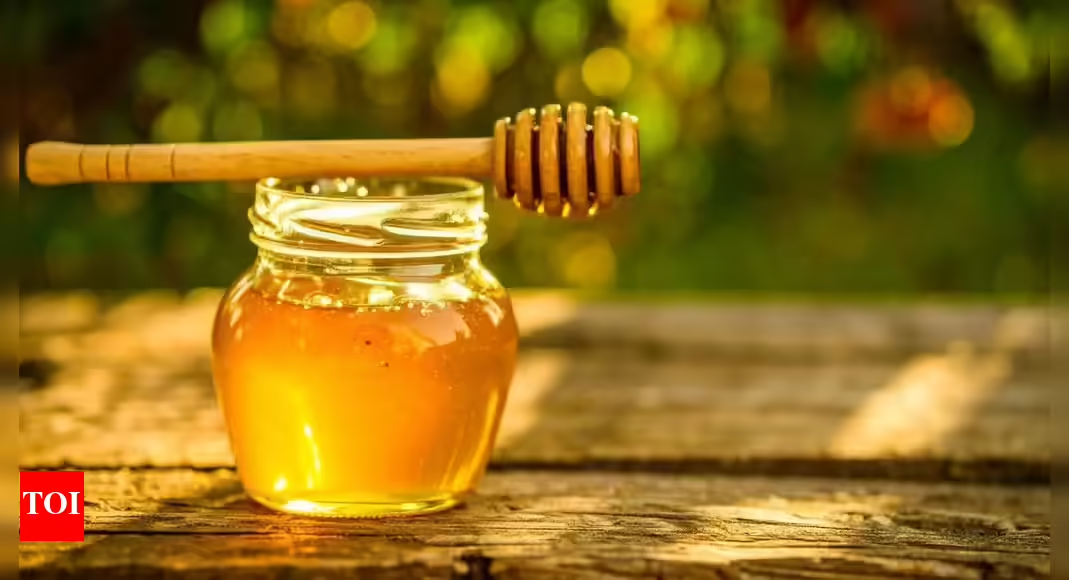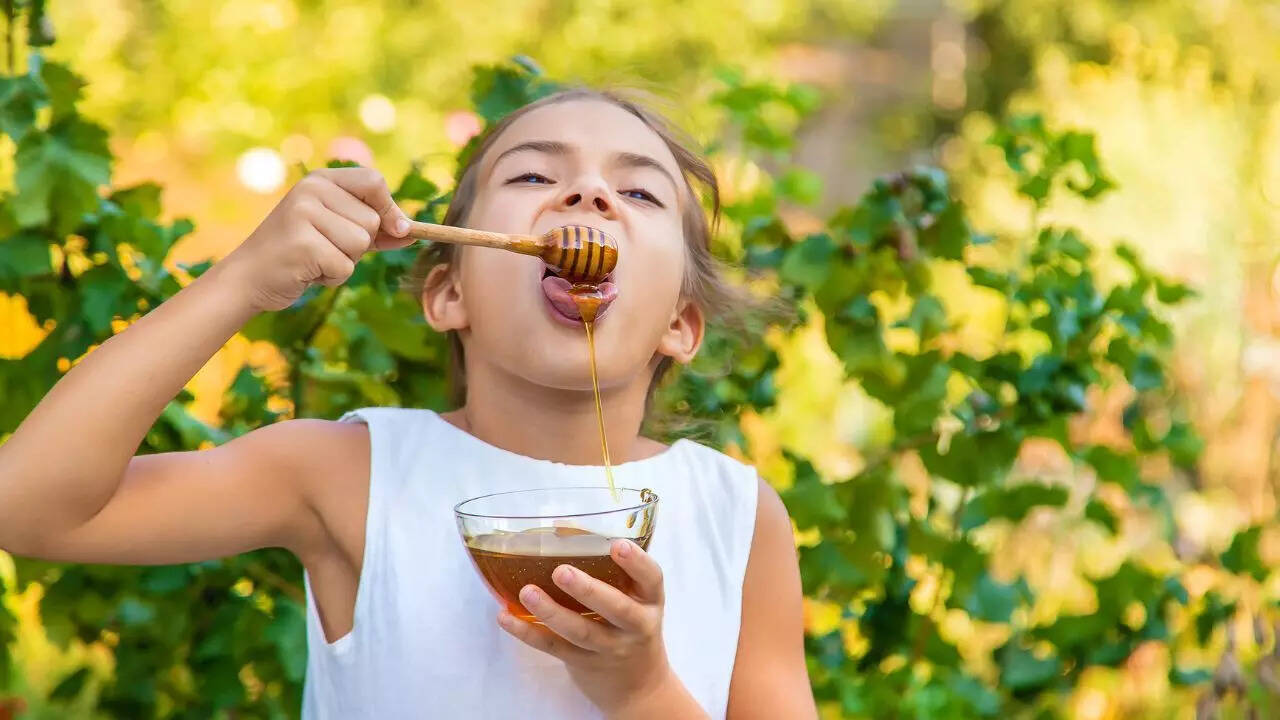Five powerful healing honeys from across the world – The Times of India

Honey has been used both as food and medicine since thousands of years. As per traditional texts of several civilizations they are believed to be the food of Gods and are trusted to have healing powers. While thousands of varieties of honey can be found the world over, there are some which are acknowledged for their medicinal properties. From treating wounds to curing sore throat to healing stomach infections, honey has several uses. Here is a list of 5 most potent types.Mānuka honey (New Zealand)Place of origin & folklore: Mānuka honey is made by bees that forage on the mānuka tree (Leptospermum scoparium), native to New Zealand (and parts of Australia). Māori traditional medicine long prized mānuka and its nectar for wound care and sore throats; in recent decades mānuka’s reputation grew worldwide as a “medicinal” honey.How it’s extracted: Commercial mānuka is harvested like other monofloral honeys — frames are removed from hives, uncapped and spun in a centrifuge. Authenticity is important: grading systems (UMF, MGO/NPA) measure non-peroxide antibacterial activity and methylglyoxal (MGO) levels, the compound linked to mānuka’s unique antibacterial strength. Mānuka is notable for high levels of MGO and phenolic antioxidants; it also contains small amounts of minerals and enzymes typical of honey. Mānuka is widely used for wound dressings, treating skin infections, and soothing sore throats. Laboratory and clinical studies show mānuka’s antibacterial and anti-biofilm activity (including against antibiotic-resistant strains), and it’s used clinically in some wound-care products. While promising, clinical use should follow medical guidance.Sidr (Ziziphus) honey (Yemen, Saudi Arabia, parts of South Asia)Sidr honey- From nectar of the Sidr/jujube tree (Ziziphus spp) has legendary status in the Middle East and parts of South Asia. Yemeni Sidr is particularly prized; folklore ascribes broad healing powers to it, ranging from digestive tonics to convalescence aids. Traditional extraction often involves careful (and limited) harvests from remote trees; modern producers use the same uncapping/spinning extraction as other honeys but many small producers sell cold-extracted or strained Sidr to preserve nuance. Authenticity remains a premium concern. Sidr honeys tend to be rich in phenolic compounds and flavonoids and show strong antioxidant profiles in lab tests; they also contain typical honey sugars, enzymes and trace minerals. Traditionally used for stomach and respiratory complaints and as a general restorative. Scientific studies show Sidr honey often has significant antibacterial and antioxidant activity in vitro; this supports some traditional claims but does not replace medical treatment.

Tualang honey (Malaysia / Southeast Asia)Place of origin & folklore: Tualang honey comes from bees that nest in tall Tualang trees (Koompassia excelsa), harvested traditionally by climbers in Malaysian rainforests. Indigenous and local communities have used it for wound care and general health. Wild-hive harvesting involves carefully removing comb from tree cavities; for commercial distribution, honey is filtered and bottled with minimal heating to retain bioactive compounds. Tualang shows a strong antioxidant profile and contains phenolics, flavonoids and the usual mix of sugars, enzymes and trace minerals typical of floral honeys. Tualang is used for wound healing, coughs, and as a supportive therapy; multiple reviews and studies report antimicrobial, anti-inflammatory, antioxidant and even potential anticancer effects in lab and some animal studies — promising but not definitive for broad clinical claims.Buckwheat honey (temperate regions: North America, Europe)Buckwheat honey is produced where buckwheat blooms, cooler temperate zones in North America and Europe. Folk uses include cough remedies and tonics; its dark color and robust flavor distinguish it from lighter floral honeys. Standard frame removal and centrifugal extraction, often marketed as “raw” or lightly processed to preserve antioxidants. Darker honeys like buckwheat often retain Buckwheat honey ranks high in antioxidants (measured by ORAC and phenolic content) compared with many other honeys. It contains trace minerals and antioxidant polyphenols that likely contribute to its activity. Clinical studies have shown buckwheat honey can relieve nighttime cough and improve sleep in children better than no treatment; its antioxidant content supports general claims about respiratory support and immune-system benefits.Thyme honey (Mediterranean: Greece, Crete, Sicily, Morocco)Thyme honey-from wild thyme (Thymus spp.) flowers is a Mediterranean staple. In Greece and nearby regions, thyme honey is considered a premium medicinal food and is traditionally used for sore throats, coughs and wound care. Bees forage on thyme blooms in mountainous areas; careful seasonal harvesting and minimal processing are common among artisan producers to retain volatile phenols. Thyme honey often contains thymol, carvacrol and other phenolic compounds (shared with thyme essential oil), plus hydrogen peroxide activity — factors linked to antibacterial and anti-inflammatory effects. Used for sore throats, wound-cleansing poultices and respiratory support. Recent studies report strong antimicrobial activity (sometimes comparable to mānuka in assays) and clinical trials have tested thyme honey rinses for xerostomia and wound care with encouraging results.
var _mfq = window._mfq || [];
_mfq.push([“setVariable”, “toi_titan”, window.location.href]);
!(function(f, b, e, v, n, t, s) {
function loadFBEvents(isFBCampaignActive) {
if (!isFBCampaignActive) {
return;
}
(function(f, b, e, v, n, t, s) {
if (f.fbq) return;
n = f.fbq = function() {
n.callMethod ? n.callMethod(…arguments) : n.queue.push(arguments);
};
if (!f._fbq) f._fbq = n;
n.push = n;
n.loaded = !0;
n.version = ‘2.0’;
n.queue = [];
t = b.createElement(e);
t.async = !0;
t.defer = !0;
t.src = v;
s = b.getElementsByTagName(e)[0];
s.parentNode.insertBefore(t, s);
})(f, b, e, ‘https://connect.facebook.net/en_US/fbevents.js’, n, t, s);
fbq(‘init’, ‘593671331875494’);
fbq(‘track’, ‘PageView’);
};
function loadGtagEvents(isGoogleCampaignActive) {
if (!isGoogleCampaignActive) {
return;
}
var id = document.getElementById(‘toi-plus-google-campaign’);
if (id) {
return;
}
(function(f, b, e, v, n, t, s) {
t = b.createElement(e);
t.async = !0;
t.defer = !0;
t.src = v;
t.id = ‘toi-plus-google-campaign’;
s = b.getElementsByTagName(e)[0];
s.parentNode.insertBefore(t, s);
})(f, b, e, ‘https://www.googletagmanager.com/gtag/js?id=AW-877820074’, n, t, s);
};
function loadSurvicateJs(allowedSurvicateSections = []){
const section = window.location.pathname.split(‘/’)[1]
const isHomePageAllowed = window.location.pathname === ‘/’ && allowedSurvicateSections.includes(‘homepage’)
const ifAllowedOnAllPages = allowedSurvicateSections && allowedSurvicateSections.includes(‘all’);
if(allowedSurvicateSections.includes(section) || isHomePageAllowed || ifAllowedOnAllPages){
(function(w) {
function setAttributes() {
var prime_user_status = window.isPrime ? ‘paid’ : ‘free’ ;
var geoLocation = window?.geoinfo?.CountryCode ? window?.geoinfo?.CountryCode : ‘IN’ ;
w._sva.setVisitorTraits({
toi_user_subscription_status : prime_user_status,
toi_user_geolocation : geoLocation
});
}
if (w._sva && w._sva.setVisitorTraits) {
setAttributes();
} else {
w.addEventListener(“SurvicateReady”, setAttributes);
}
var s = document.createElement(‘script’);
s.src=”https://survey.survicate.com/workspaces/0be6ae9845d14a7c8ff08a7a00bd9b21/web_surveys.js”;
s.async = true;
var e = document.getElementsByTagName(‘script’)[0];
e.parentNode.insertBefore(s, e);
})(window);
}
}
window.TimesApps = window.TimesApps || {};
var TimesApps = window.TimesApps;
TimesApps.toiPlusEvents = function(config) {
var isConfigAvailable = “toiplus_site_settings” in f && “isFBCampaignActive” in f.toiplus_site_settings && “isGoogleCampaignActive” in f.toiplus_site_settings;
var isPrimeUser = window.isPrime;
var isPrimeUserLayout = window.isPrimeUserLayout;
if (isConfigAvailable && !isPrimeUser) {
loadGtagEvents(f.toiplus_site_settings.isGoogleCampaignActive);
loadFBEvents(f.toiplus_site_settings.isFBCampaignActive);
loadSurvicateJs(f.toiplus_site_settings.allowedSurvicateSections);
} else {
var JarvisUrl=”https://jarvis.indiatimes.com/v1/feeds/toi_plus/site_settings/643526e21443833f0c454615?db_env=published”;
window.getFromClient(JarvisUrl, function(config){
if (config) {
const allowedSectionSuricate = (isPrimeUserLayout) ? config?.allowedSurvicatePrimeSections : config?.allowedSurvicateSections
loadGtagEvents(config?.isGoogleCampaignActive);
loadFBEvents(config?.isFBCampaignActive);
loadSurvicateJs(allowedSectionSuricate);
}
})
}
};
})(
window,
document,
‘script’,
);
[title_words_as_hashtags




